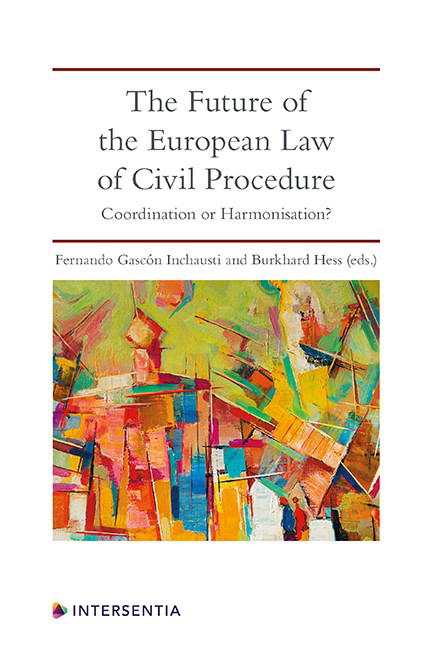Book contents
- Frontmatter
- Contents
- List of Cases
- List of Authors
- Introduction
- PART I METHODOLOGICAL APPROACHES
- PART II THE CURRENT SITUATION: VERTICAL AND HORIZONTAL HARMONISATION
- PART III CURRENT INITIATIVES FOR FURTHER HARMONISATION: The ELI/UNIDROIT Project
- The 2017 Directive Proposal on Common Minimum Standards of Civil Procedure
- Index
- ABOUT THE EDITORS
Harmonising Access to Information and Evidence: The Directives on Intellectual Property and Competition Damages
Published online by Cambridge University Press: 23 July 2020
- Frontmatter
- Contents
- List of Cases
- List of Authors
- Introduction
- PART I METHODOLOGICAL APPROACHES
- PART II THE CURRENT SITUATION: VERTICAL AND HORIZONTAL HARMONISATION
- PART III CURRENT INITIATIVES FOR FURTHER HARMONISATION: The ELI/UNIDROIT Project
- The 2017 Directive Proposal on Common Minimum Standards of Civil Procedure
- Index
- ABOUT THE EDITORS
Summary
INTRODUCTION
This chapter deals with the harmonisation of the procedural rules governing access to information and access to evidence in civil cases within the EU, sometimes known as the rules on “discovery“ or “disclosure“ .
These rules come into play whenever some information about the facts of the case or some pieces of evidence relevant to the case are not within the reach of the party needing that information or that evidence for building up his or her claims or defences. In other words, the rules on access to information and evidence are applicable whenever (i) a party to a civil dispute needs to obtain relevant information or evidence for his or her case, (ii) that information or evidence is under someone else‘s control and, ultimately, (iii) that someone is not willing to hand it over.
Indeed, in order to present a civil case, the parties to a dispute need information and evidence. Information about the facts of the case, so that they can put forward all the relevant details concerning their pleadings; and sufficient evidence to support the factual information that is to be submitted to the court.
In the United States of America, the parties usually enjoy the opportunity for broad discovery of information and evidence kept by the opponent or even by third parties. On a general basis, the American Federal Rules of Civil Procedure follow a system of “notice pleading“, whereby plaintiff s may start civil proceedings by way of a very simple brief, which needs only to contain a short and plain statement of the claim showing that the pleader is plausibly entitled to relief; and, once that brief has been filed, the rules on discovery make it relatively easy – although expensive – for the parties to have access to all kinds of information and evidence about the case which is under someone else‘s control.
Conversely, generally speaking, none of the EU Member States – not even the UK – has rules of broad discovery like the ones applicable to civil litigation in the US federal courts.
- Type
- Chapter
- Information
- The Future of the European Law of Civil ProcedureCoordination or Harmonisation?, pp. 123 - 160Publisher: IntersentiaPrint publication year: 2020



